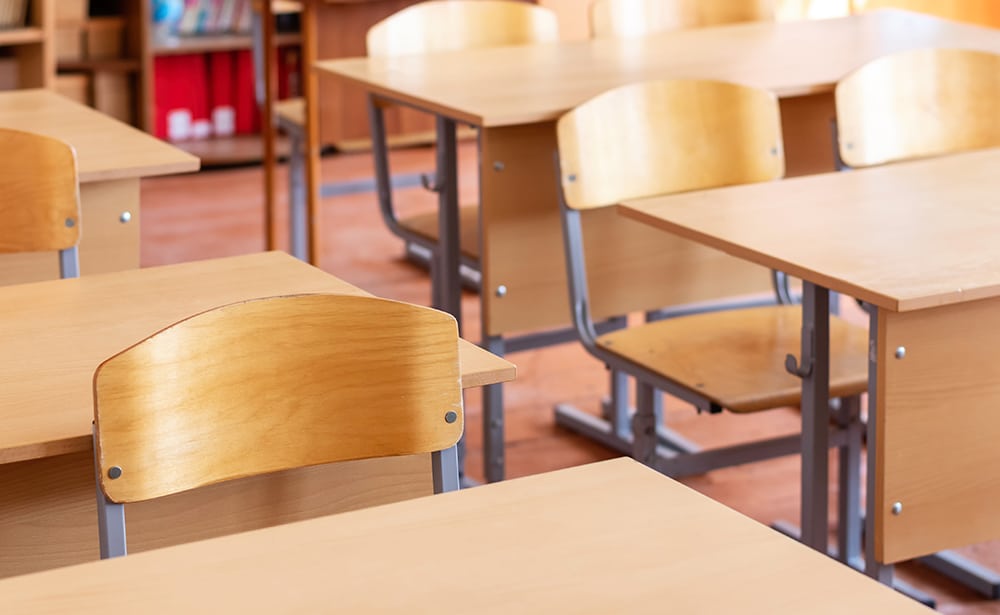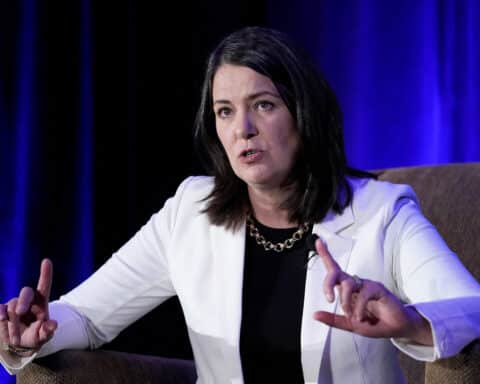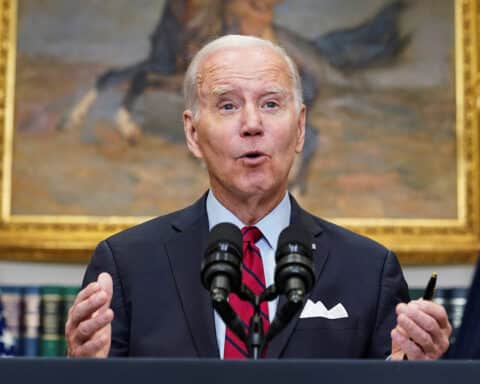The Archdiocese of New York recently announced that 20 Catholic schools would not be opening for this coming academic year. This news has become routine for those of us who are involved in Catholic school education. Each year during the spring months, my Google alerts have what seems to be a daily story about another school closing or, worse, a diocese announcing multiple closures all at once. In the U.S., we have averaged about 90-100 Catholic school closures over the past five years, so one can see how it can appear to become routine.
The announcement from New York was a bit different for me because my Catholic elementary school, St. Patrick School in Bedford, was on the list of closures. My four siblings and I all attended St. Pat’s for most of our elementary education. It was more than simply a school, though. My dad was president of the parish council and was a lector at Mass on Sundays. My mom was president of the PTA, and most weekends seemed to revolve around the parish. The priests at the church would come to our house for dinner on Sunday nights. And my friends and I enjoyed being altar boys, especially when we got out of school to serve a special Mass during the school day.
When both of my parents died, my siblings, as young adults, remember the warmth of condolences that were provided to us by long-time parishioners and former classmates. This occurred even though I had moved across the country to California. The school was more than a school — it was a connection to home and was a vital part of my upbringing.
Challenges
I am in no way unique, however, as my experiences need to be multiplied by the millions of graduates of Catholic schools that have closed over the past two decades in the United States. This troubling trend has been analyzed for causes and there are many suspects — charter schools, the abuse scandal in the Catholic Church, the decrease in religious sisters (who long staffed Catholic schools) and subsequent increase in lay staff, which added more expense dollars to the budget. Regardless of the cause, the reality is that Catholic schools have struggled over the past few decades.
With that background, we now find ourselves with a wholly new and unprecedented challenge, a global pandemic that has caused schools to move to distance learning and has caused the economy to collapse with the related impact on family incomes and security. The impact is felt most by Catholic schools that serve low-income communities, which were already on the margins, even before coronavirus became a household word. The fears that the economic fallout will be longer-lasting creates more concern about the health and stability of Catholic schools.
Vitality and success
While the picture may seem bleak, there are some positive notes to highlight. The vitality, importance and success of Catholic schools are understood by most people, even by those who do not have their children enrolled. When the shift to remote learning took place back in March, Catholic schools across the country moved quickly and deliberately to put innovative and creative distance-learning plans in place. Stories of these transformations taking place in a matter of days left us inspired by the dedication and commitment of Catholic school principals and teachers. This capacity to change quickly, but effectively, highlights the tremendous value Catholic schools bring to the education conversation and why we need to nurture and grow them for the future.
While the coronavirus has had a devastating impact on the country, as well as on the Catholic Church and schools, it also provides us with opportunities for growth. The impact in the short term may be significant, but our challenge is how we seize the opportunities so we can sustain long-term growth. Catholic schools are made for this time, because they are autonomous and have the capacity to be nimble and innovative in periods of rapid change.
Move from good to great
The question every Catholic school leader should be asking is how do I move my school from good to great? Catholic schools, regardless of the recent enrollment declines, have a rich history of success. That should be celebrated and those who are associated with specific schools should feel pride in their work. But celebrating success is not enough because, in the words of Jim Collins, “No matter what you have achieved you will always be merely good relative to what you can become.”
The challenging reality is that we have never closed a great Catholic school. We have closed too many good ones and many other very good ones. But great Catholic schools do not close because they have a mindset of continuous improvement that engenders a culture of growth. Every success is celebrated, but soon after, the question is asked, “How do we get better?”
If we accept the fact that great Catholic schools do not close, then our aim throughout our Church should be to assist in every Catholic school in achieving greatness. This is not an endpoint but a mindset — great schools, like great organizations, do not have a finish line they are trying to reach. It is a cycle that continues over the life of the school, with changes in personnel and students who all benefit from a clear commitment to excellence.
National Catholic Educational Association
The National Catholic Educational Association (NCEA) is committed to assisting all Catholic schools in creating this culture of excellence that leads to great Catholic schools. Since the coronavirus pandemic shut down in-person education in March, we have offered a series of virtual workshops and training to support Catholic school educators in this rapid transition to distance learning.
We had to convert our in-person convention, which was scheduled to take place in Baltimore in mid-April, to a virtual event in a matter of weeks. We were thrilled to have over 7,000 people register and participate in NCEA Virtual. We have offered follow-up sessions on budget and finance, mental health and STREAM (Science, Technology, Religion, Engineering, Arts, Math) education. We have also had a panel discussion to address the national conversation on systemic racism, and we have had follow-up podcasts and blog posts on the topic as well.
For the coming year, we are focused on developing ongoing, sustained training support to assist Catholic schools in moving to growth. Our focus will be on leadership formation, operational vitality and distance learning for teachers. These pieces of training will all be delivered virtually but will also have small-group components, as well as one-to-one coaching. Our belief is that we need to embrace the challenges facing us today, so we are focused on being the preeminent provider of virtual learning for Catholic schools.
The work ahead will be challenging, but it is vitally important. One reality that our Catholic Church needs to acknowledge is that there is not a “Catholic school problem” in the United States but rather a Church problem that is impacting schools. In many ways, the trends regarding participation in the sacramental life of the Church are even worse than the Catholic school enrollment trends. We are losing many young people from the Faith, which has tragic long-term consequences.
The solution to this trend in the Church is, somewhat ironically, Catholic schools. If we lose more and more schools each year, the likelihood that we turn around the overall trend in the Church becomes less and less likely. If we make the choice to invest in Catholic schools, and ensure that each of them builds a culture of excellence that leads to greatness, we are ensuring that the most effective tool for evangelization that has ever existed will continue to serve communities for generations to come.
Kevin Baxter is the chief innovation officer for the National Catholic Educational Association.





